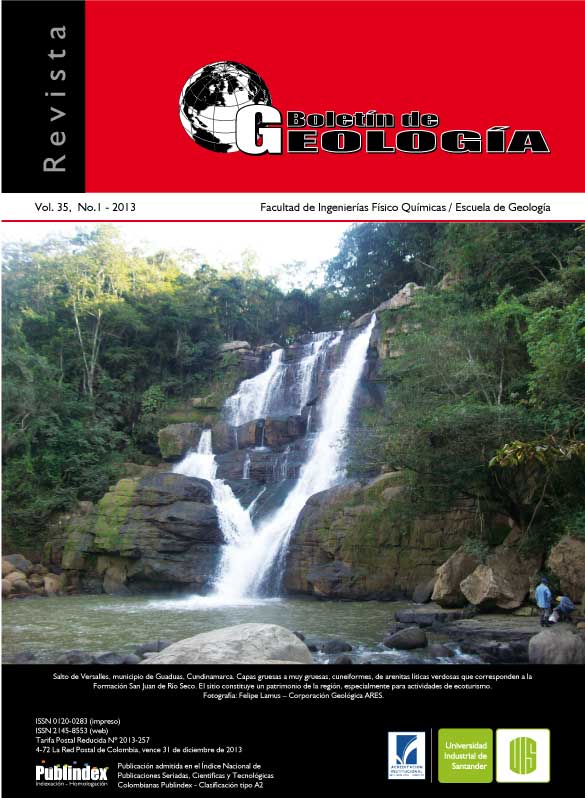3D ANALYTICAL SIGNAL IN GRAVIMETRIC DATA INTERPRETATION. CASE STUDY: LOS NARANJOS - FACATATIVÁ (COLOMBIA)
Published 2013-05-31
How to Cite
Abstract
A gravimetric study in a sector of the municipality of Facatativa, located in the west Sabana of Bogotá is presented. The obtained data were processed using the proper corrections, for instance: height, latitude, tide and drift reductions. This procedure was performed to define the Total Bouguer Anomaly; applying the reduction the first and second order vertical derivative are obtained. With the derivative has been possible to determine some geological features: surface, shallow and anomalous bodies. To establish those features is necessary to identify the location, shape and depth of the anomalous source, by applying 3D Analytic Signal method. The results are very accurate in the geological interpretation, not only of the magnetic potential but also with the gravimetric potential The geophysical interpretation and geological knowledge through Poisson relation, allowing precise definition of the geological contacts, faults and structural boundaries in the field of study.
Keywords: Gravimetry, 3D Analytic Signal, Vertical Derivates, Anomaly Sources
Downloads
References
Craig, M. 1996. Analytical signals for multivariate data: Mathematical Geology, 38: 314-330.
Dressler, M. 2007. Interpolation methods for construction of surfaces. Thecnical University of Liberec
Elkins, T.A. 1951. The second derivative method of gravity interpretation. Geophysics, 16: 29-50.
Fabra, C.L.M., y Téllez M.S.A. 2009. Determinación de la Anomalía Magnética Marina para una zona piloto de estudio en el Caribe Colombiano. Universidad Distrital Francisco José de Caldas. Tesis de Pregado en Ingeniería Catastral y Geodesia. Bogotá, Colombia, 152p.
Hansen, R., Pawlowski, R., and Wang, X. 1987. Joint use of analytic signal and amplitude of horizontal gradient maxima for three-dimensional; gravity data interpretation: 57th Annual International; Meeting, SEG, Expanded Abstract, 100-102
INGEOMINAS. 2005. Mapa Geológico de la Sabana de Bogotá. Escala 1:100.000
Keating, P., and Sailhac, P. 2004. Use of the analytic signal to identify magnetic anomalies due to kimberlite pipes. Geophysics, 69 (1): 180–190
Klingele, E.E., Marson, I., and Khle, H.G. 1991. Automatic interpretation of gravity gradiometric data in two dimensions: vertical gradient, Geophysical Geophysics, 39: 407-434.
